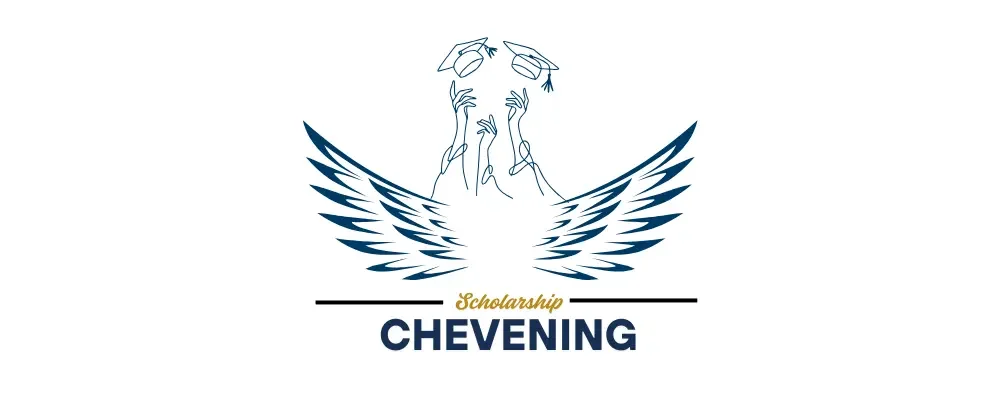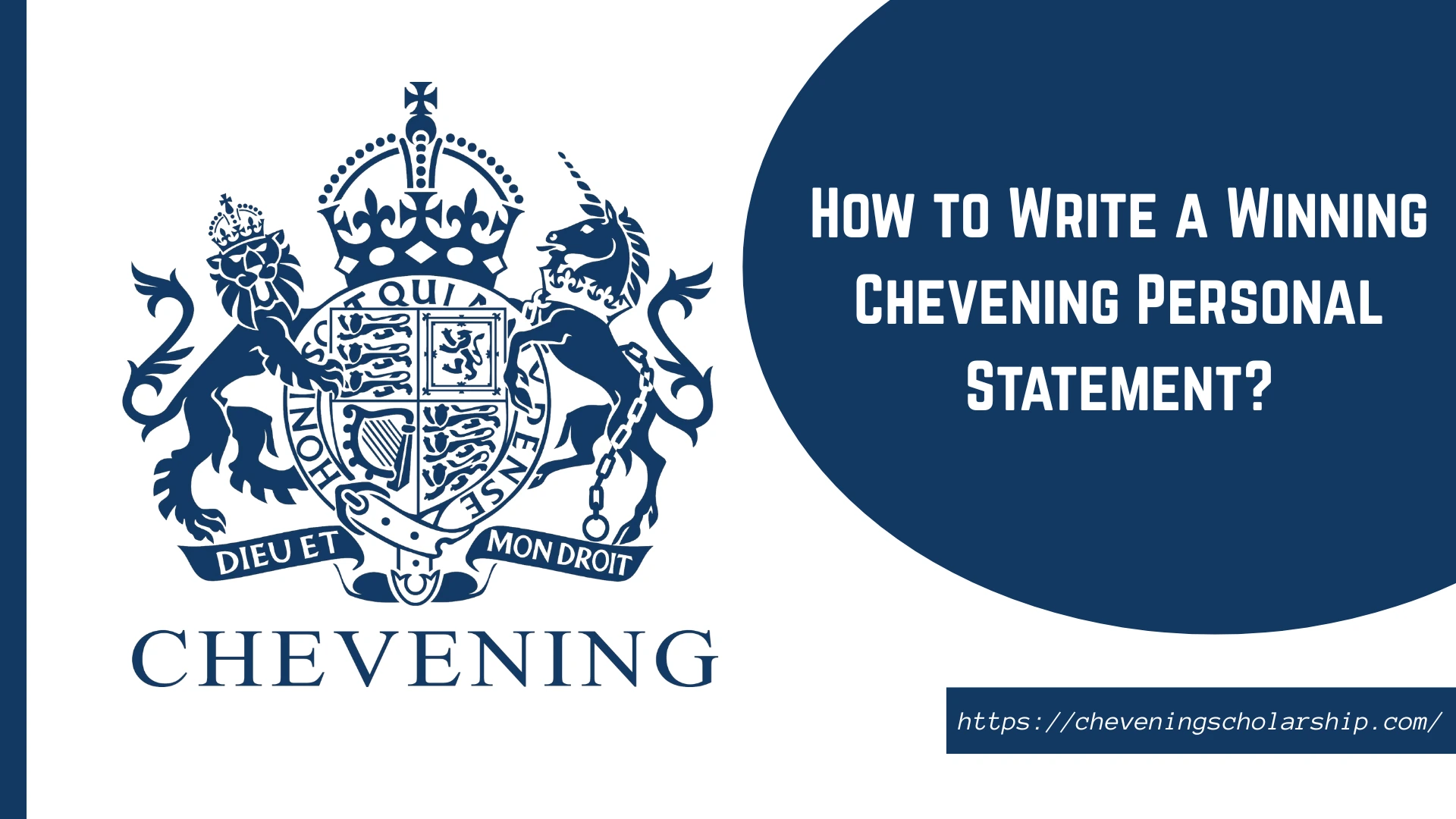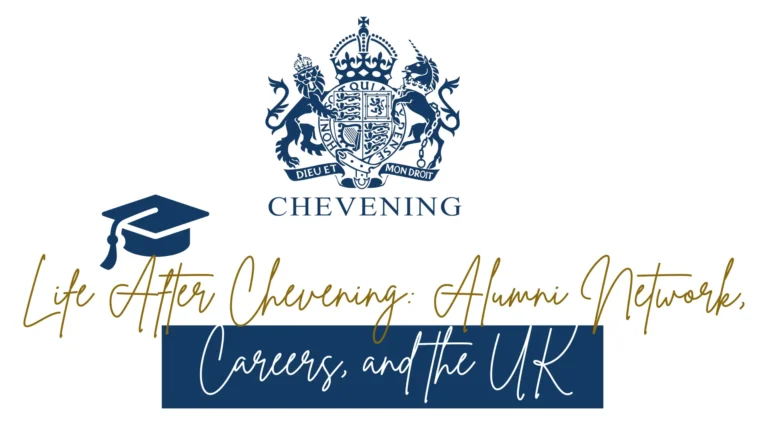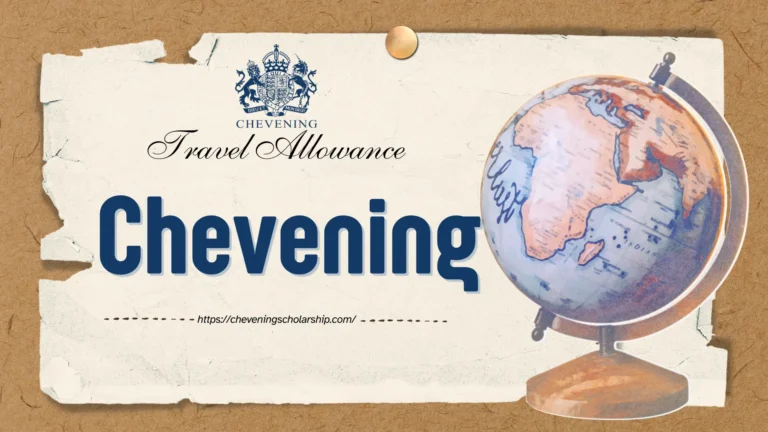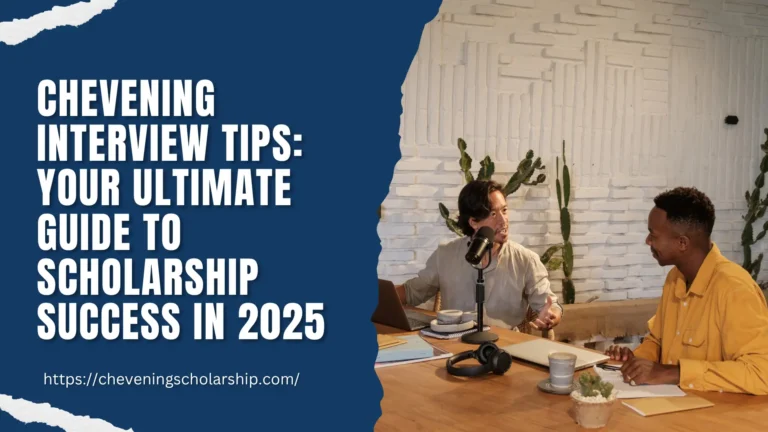How to Write a Winning Chevening Personal Statement: Your Complete Guide to Standing Out
Let me be honest with you—staring at that blank screen, knowing you’ve got four essays standing between you and a fully-funded UK scholarship, can feel absolutely terrifying. I get it. The Chevening Scholarship isn’t just another application; it’s your shot at joining an elite global network of leaders, and your personal statements? They’re your only chance to convince the selectors that you deserve to be there.
But here’s the thing: thousands of brilliant people freeze up when it comes to writing these essays. They overthink it, they undersell themselves, or worse—they sound like every other applicant. And that’s exactly what we’re going to fix today.
What Exactly Is a Chevening Personal Statement?
Right, let’s clear something up first. When people talk about the “Chevening personal statement,” they’re actually referring to four separate essays you need to submit with your application. Think of them as four different windows into who you are, what you’ve done, and where you’re heading.
You’ll need to write about:
- Leadership and Influence (Essay 1)
- Networking (Essay 2)
- Studying in the UK (Essay 3)
- Career Plan (Essay 4)
Each essay has a minimum of 100 words and a maximum of 500 words. And yes, they’re serious about that word limit—seriously serious. The online application system literally won’t let you exceed it, so don’t even think about trying to sneak in extra words.
Chevening Visa Support: Everything You Need to Know About Getting Your UK Student Visa
Why Your Chevening Essays Matter More Than You Think
Look, I’ve seen incredible candidates with stellar CVs get rejected because their essays were, well, forgettable. On the flip side, I’ve watched underdogs with compelling narratives sail through to interviews. The truth? Your essays are the great equalizer.
The Chevening selection panel reads thousands of applications every year. They’re looking for people who don’t just tick boxes but who demonstrate genuine leadership potential, authentic networking abilities, and a crystal-clear vision for their future. Your personal statements are where you prove you’re that person.
Understanding the Word Limit (And Why You Should Respect It)
Can we talk about the word count for a second? Because this trips up so many people.
Each of your four Chevening essays needs to be between 100 and 500 words. Not 501. Not 499 with some creative hyphenation. Exactly 100-500 words. The application system is unforgiving—it counts every single word, and if you’re over, you simply can’t submit.
But here’s what most applicants don’t realize: hitting exactly 500 words isn’t the goal. Sometimes your most powerful essay might be 450 words of pure, focused brilliance. Quality always trumps quantity. That said, if you’re only managing 150 words, you’re probably not going deep enough.
The Leadership and Influence Essay: Show, Don’t Just Tell
This is essay number one, and it’s where most people stumble right out of the gate. The prompt asks you to describe a time when you demonstrated leadership and influenced others. Sounds straightforward, right? Wrong.
Here’s what doesn’t work: “I am a natural leader. In my role as project manager, I led a team of five people to complete a project ahead of schedule. My leadership skills helped us succeed.”
Boring. Vague. Generic. Next.
Here’s what does work: Painting a specific picture of a challenging situation where you stepped up, made tough decisions, and created tangible change. You need to transport the reader into that moment with you.
Think about it this way: leadership isn’t about your job title. Some of the best leadership essays I’ve seen came from people who organized community initiatives, turned around failing volunteer projects, or influenced policy changes from junior positions. What matters is the impact you created and how you navigated the complexities of bringing people along with your vision.
Crafting Your Leadership Narrative
Start with a specific scenario. Set the scene briefly—what was happening, why did it matter, and what was at stake? Then walk us through your approach. What did you actually do? How did you influence people who might have been resistant? What obstacles did you overcome?
And here’s the crucial bit: show us the results. Not fluffy results like “everyone learned something valuable,” but concrete outcomes. Did you increase participation by 40%? Change an organizational policy? Create something that outlived your involvement?
The leadership essay examples that succeed have one thing in common: they tell a story with stakes, strategy, and measurable success.
Chevening Outcomes and Impact: What Actually Happens After the Scholarship
The Networking Essay: It’s Not About How Many Business Cards You’ve Collected
Essay two is where things get interesting. Chevening wants to know about your networking skills, but they’re not asking you to brag about your LinkedIn connections or that time you shook hands with someone important at a conference.
Real networking is about building genuine relationships that create mutual value. It’s about how you’ve connected people, ideas, and opportunities in ways that mattered.
The mistake everyone makes: Treating this like a name-dropping exercise or a list of networking events you’ve attended.
What actually works: Demonstrating how you’ve strategically built relationships that advanced your goals, helped your community, or created opportunities for others.
Maybe you connected two organizations that ended up partnering on a crucial project. Perhaps you built a professional network in a new field that opened doors for your entire team. Or you might have used your connections to solve a problem that individual efforts couldn’t crack.
The key word here is strategic. Chevening selectors want to see that you understand networking as a deliberate skill, not just something that happens when you’re naturally outgoing.
Studying in the UK Essay: Beyond “I Love London”
Essay three asks why you want to study in the UK specifically, and this is where authenticity becomes everything.
You know what the selectors read a hundred times a day? “The UK has world-class universities and I’ve always dreamed of studying there.” Yawn. Delete that sentence right now.
Instead, you need to be specific about:
- Which UK institutions align with your field and why their particular approach matters for your goals
- What unique opportunities exist in the UK that you can’t get elsewhere (specific research centers, industry partnerships, policy environments)
- How the UK experience connects to your career plan and your country’s development needs
Do your homework. Research actual programs, professors, and projects. If you’re passionate about sustainable urban development, talk about specific UK cities implementing innovative solutions you want to study. If you’re in public health, reference the NHS model and how understanding it could transform healthcare delivery back home.
The study in UK essay should feel like a natural extension of your career plan—not a separate justification for why you fancy a British education.
The Career Plan Essay: Your North Star
Essay four is arguably the most important. Your career plan needs to demonstrate ambition, feasibility, and—crucially—how it benefits your home country.
Chevening isn’t funding your UK education so you can land a cushy job in London afterward. They’re investing in future leaders who will return home and create change. Your career plan essay needs to make that crystal clear.
Mastering the Chevening Application Portal: Your Complete Step-by-Step Guide
Structure Your Career Plan Like This:
Where you are now: Your current role and expertise (briefly—they’ve seen your CV)
Where you’re going: Specific career goals over the next 3-5 years after your Chevening scholarship
Why the UK masters matters: Exact skills, knowledge, or networks you’ll gain that are essential for these goals
The bigger picture: How your career trajectory contributes to development in your home country
The career goals essay that wins isn’t the one with the most impressive-sounding ambitions. It’s the one that feels authentic, well-researched, and genuinely achievable. If you’re currently a junior analyst, don’t claim you’ll be Minister of Finance in three years. Instead, map out a realistic progression that shows strategic thinking and genuine understanding of your field.
Chevening Personal Statement Format: The Technical Stuff
Let’s talk structure because formatting matters more than you might think.
Each essay should follow this basic format:
- Opening hook: One or two sentences that grab attention
- Context: Brief setup of the situation or your current position
- Main narrative: The bulk of your essay with specific examples
- Impact/Results: What changed because of your actions
- Future connection: How this experience informs your Chevening goals (subtle, not heavy-handed)
Paragraph structure: Keep them short. Like, really short. Three to four sentences maximum. This isn’t your doctoral thesis—it’s a personal narrative that needs to flow.
Transitions: Each paragraph should flow naturally into the next. Use connecting phrases that guide the reader through your story without being obvious about it.
Do’s and Don’ts: The Stuff Nobody Tells You
DO:
- Write in first person—this is your story
- Use specific numbers and concrete examples wherever possible
- Show cultural awareness and genuine interest in UK-specific opportunities
- Let your personality come through (professionally, but authentically)
- Address how your work connects to broader development goals
- Proofread obsessively—typos can torpedo an otherwise strong application
DON’T:
- Repeat information across essays (each should reveal something new about you)
- Use generic statements that could apply to anyone
- Oversell yourself to the point of arrogance
- Undersell yourself due to false modesty
- Write what you think they want to hear instead of your truth
- Leave your essays until the last minute
Getting Feedback: The Secret Weapon
Here’s something crucial: you’re too close to your own story to judge these essays objectively. You need outside perspectives—plural.
Who should review your Chevening personal statements:
- Someone who knows you well and can verify your authenticity
- Someone who doesn’t know you at all and can tell you what impression you’re making
- A Chevening alumnus if possible (they understand what actually works)
- A skilled editor who can tighten your prose without changing your voice
When seeking feedback, ask specific questions: Does this story demonstrate clear leadership? Can you picture what happened? Is the impact measurable? Does my voice come through, or do I sound like everyone else?
Don’t just collect feedback—actively use it. But also trust your instincts. If someone suggests changes that make you sound less like yourself, push back.
The Writing Timeline: When to Start
Let me save you from a common disaster: starting these essays two days before the deadline.
Ideal Chevening personal statement writing timeline:
8-10 weeks before deadline: Start brainstorming stories and examples for each essay. Make lists, mind maps, whatever works for you.
6-8 weeks out: Write terrible first drafts of all four essays. Yes, terrible. That’s the point of a first draft.
4-6 weeks out: Revise and refine. This is where the magic happens—cutting the fluff, strengthening your examples, finding your voice.
2-4 weeks out: Get feedback from multiple readers. Revise again based on their insights.
1 week out: Final polish. Check word counts obsessively. Read aloud to catch awkward phrasing.
Deadline day: Submit with confidence, not panic.
Authenticity: Your Real Competitive Edge
I’ve saved the most important advice for near the end: be authentically, unapologetically yourself.
The Chevening selection panel has seen every trick in the book. They can spot manufactured stories, borrowed phrases, and generic leadership platitudes from a mile away. What they can’t resist? Genuine passion, honest reflection, and a clear sense of purpose.
Your background might not be as traditionally impressive as some other candidates. You might not have studied at a top-tier university or worked for a famous organization. That’s completely fine. What matters is how you’ve maximized your opportunities, learned from your experiences, and developed a clear vision for where you’re heading.
Some of the most successful Chevening essays I’ve encountered came from people who wrote about modest beginnings, unconventional career paths, or setbacks that taught them more than their successes. Vulnerability, when paired with resilience and growth, is incredibly powerful.
The Chevening Selection Process: Your Complete Roadmap from Application to Acceptance
Examples and Inspiration: How to Use Them Wisely
You’re probably searching for Chevening personal statement examples right now, and that’s smart—to a point.
Reading successful essays can help you understand tone, structure, and the level of detail expected. But here’s the danger: it’s incredibly tempting to borrow ideas, phrases, or narrative structures from examples you admire.
Don’t do it. Seriously.
Use examples to:
- Understand what “showing, not telling” actually looks like in practice
- See how successful applicants structured their career narratives
- Gauge the appropriate level of formality and personal voice
- Get inspired about creative ways to demonstrate impact
Don’t use examples to:
- Copy phrases or sentences (even if you change a few words)
- Adopt someone else’s story structure when it doesn’t fit yours
- Feel inadequate because your experiences look different
- Substitute research for doing your own deep thinking
The best personal statement examples are the ones that make you think, “Okay, I see what works here, but my story is completely different and here’s how I’ll tell it.”
Common Mistakes That Kill Otherwise Strong Applications
Let’s talk about the essay killers I see repeatedly:
The humble brag disguised as humility: “While I don’t consider myself a natural leader, others have told me I possess extraordinary leadership qualities…” Stop. Either own your accomplishments or don’t mention them.
The vague impact statement: “My project made a significant difference in the community.” What difference? To whom? Measured how? Specificity is everything.
The disconnected essay collection: Your four essays should feel like different chapters of the same book, not four unrelated short stories. There should be thematic threads connecting them.
The UK worship without substance: Saying the UK has “prestigious universities” doesn’t demonstrate why you need to be there specifically.
The savior complex: Especially for candidates from developing countries—wanting to help your nation is great, but sounding like you alone will rescue it isn’t.
Editing Tips: How to Make Every Word Count
With only 500 words per essay, you cannot afford fluff. Here’s how to tighten your prose:
Cut these words immediately: very, really, extremely, quite, rather, just, actually. They add nothing.
Replace weak verbs: “I was responsible for managing” becomes “I managed.” “I worked to improve” becomes “I improved.”
Delete redundancy: “Past experience” is just “experience.” “End result” is just “result.” Every word must earn its place.
Active voice always: “The program was launched by me” becomes “I launched the program.” Active voice is tighter and more powerful.
Read aloud: Your ears will catch clunky phrasing your eyes might miss. If you stumble while reading, your sentence needs work.
Success Stories: What Winners Actually Did Differently
You want to know the secret of successful Chevening personal statements? There isn’t one single formula, but there are patterns.
Winners tell stories that stick with you. They write about specific moments, specific people, specific challenges. They demonstrate growth—showing not just what they achieved but what they learned and how they adapted.
They’re honest about setbacks without dwelling on them. They acknowledge gaps in their experience while explaining how they’re working to fill them. They connect their individual ambitions to collective benefit without sounding preachy.
And perhaps most importantly, they write with energy. You can feel their passion for their work, their curiosity about their field, their determination to create change. That enthusiasm is contagious—and it’s what makes selectors want to invest in them.
The Ultimate Guide to Chevening Scholarships: Your Ticket to UK Excellence
Your Checklist: Before You Hit Submit
Before you submit your Chevening application, run through this final checklist:
✓ Each essay is between 100-500 words (verify with the application system)
✓ You’ve used specific examples with measurable outcomes
✓ Each essay reveals something different about you
✓ Your career plan connects logically to your UK study goals
✓ You’ve explained why UK specifically, not just why a masters degree
✓ Your essays demonstrate the three Chevening values: leadership, networking, and giving back
✓ You’ve eliminated all typos, grammatical errors, and awkward phrasing
✓ Your authentic voice comes through (read it aloud—does it sound like you?)
✓ At least three people have reviewed and provided feedback
✓ You’ve slept on your final draft and reviewed it with fresh eyes
Final Thoughts: Trust Your Journey
Look, writing these essays is hard. It requires brutal honesty with yourself about your strengths, your ambitions, and your impact so far. It demands that you articulate things you might normally downplay or haven’t fully processed yet.
But here’s what I want you to remember: you’re applying to Chevening for a reason. Something in your experience, your goals, or your vision makes you believe you’re right for this scholarship. Trust that instinct. Your job now is simply to communicate it clearly and compellingly.
The strongest Chevening personal statements aren’t the ones written by people with the most impressive CVs. They’re written by people who understand themselves deeply, articulate their goals clearly, and can demonstrate—through specific, memorable examples—that they have the leadership potential, networking savvy, and commitment to create change.
You’ve got the experiences. You’ve got the vision. Now you just need to tell your story in a way that makes the selection panel lean forward in their chairs and think, “We need to invest in this person.”
So take a deep breath, open that document, and start writing. Your future self—the one accepting that Chevening scholarship—is counting on you.
